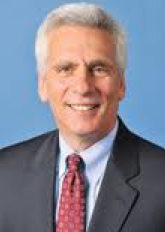Excerpted from Crunch: Why Do I Feel So Squeezed? (And Other Unsolved Economic Mysteries) by Jared Bernstein (Berrett-Koehler Publishers, 2008)
Yes, Virginia, presidents do matter when it comes to the economy—in fact, they matter a lot more than most economists like to admit.
It’s de rigueur to dismiss all the usual presidential bluster on the economy as just that. And presidents do have a way of crowing about how their fingerprints are all over positive economic developments while nowhere near the scene of lousy economic outcomes. But modern presidents do have a major effect in a few key areas: fiscal stimulus, or giving the economy a jolt when it needs it; setting spending priorities; and good old power dynamics.
The first part, what is often called Keynesian stimulus, after the great economist who legitimized such actions, is less common, because, thankfully, we’re not usually in recession. When we are in a downturn, however, the mechanisms that keep the economy humming are jammed. For one reason or another, consumers aren’t consuming, investors aren’t investing, and employers aren’t hiring. In such cases, presidents can work with Congress to stimulate the economy through a tax cut or even a “tax rebate” (lots of people get a check for a few hundred bucks), or through juiced-up government spending on one project or another.
President George W. Bush shoved a Keynesian tax cut through Congress in 2001, though with this guy there’s always an angle. In the midst of a strong economy in 2000, he ran on a plan to cut taxes. But it wasn’t until a recession was declared in 2001 that he used economic stimulus as a rationale. And, in fact, later Bush tax cuts that occurred outside of recession had other rationales. Recession? Tax cut. Recovery? Tax cut. War? Tax cut. Colts win the Super Bowl? Tax cut. When your only tool is a hammer, everything looks like a nail.
Certainly, presidents don’t always go to the Keynesian place. If the recession looks shallow or short lived, it’s going to be hard to get the stimulus into the system in time.11 But it is one of their important tools.
The big story regarding presidents and the economy, however, lies elsewhere, deeply embedded in our power and trade-off principles (#’s 1 and 3). Specifically, where presidents flex their economic muscles is in the nuanced area of setting spending priorities and the resultant redistribution of power, resources, and opportunities.
Let me hit you with what I consider a pretty big number: $3 trillion. That’s just about the size of the most recent U.S federal budget, and it amounts to about a fifth of the economy. How you spend that kind of money matters a great deal, and presidents have a lot to do with that. So don’t let anyone ever tell you they don’t influence economic outcomes. Of course, Congress plays a big role in shaping the budget, too, but the document originates from the executive branch, and the party that composes the first draft of the legislation always has the most sway.
To be shamefully, but usefully, reductionist, when setting spending priorities, presidents operate in three modes: redistributing, investing, and constraining.
When a-redistributing he or she goes, keep an eye on the president’s target. Principle #3, trade-offs matter, is in play here. You can give tax cuts for people who don’t need them, though they really do want them. You can funnel spending projects to your friends. No politician is blameless in this game, but just to take a pointed example from current events, let’s look at the George W. Bush record.
One of the best outfits for crunching numbers on who benefits from tax cuts is the group Citizens for Tax Justice. Their name suggests an edge (though I don’t think “Justice” implies a bias we should be worried about), but their reputation for purity in how they go about their analysis is stellar. In 2006, they took a look at who gained, and by how much, from the spate of Bush tax cuts that occurred over the president’s first term, and this is what they found.12
The poorest group of families, those in the bottom fifth of the income scale (average income: $11,300), ended up with less than a hundred bucks from the cuts. Middle-income families, in the $40K range, ended up with about $700; and those at the top end, with an average income of about $1.5 million, well, they came away from the table with $52,000 in tax cuts.
Bill Clinton had a better record in this regard. In his first budget, for example, he raised taxes on the wealthy and greatly expanded the Earned Income Tax Credit (EITC). That’s a wage subsidy for low-income workers, but it works as pure income redistribution through the income tax system. So this was kind of a Robin Hood moment, in terms of the president’s redistribution mode.13 But lest you think this stuff always follows a partisan pattern, note that President Reagan also championed a big boost in the EITC.
Investing some of that $3 trillion is another way presidents can affect the economy, often well down the road, by spending money on potentially productivity-enhancing projects that the private sector is unlikely to embrace. Al Gore may not have invented the Internet, but the government was the major player in getting it off the ground, and the productivity payback has been enormous. Moreover, the start-up costs and linkage needs of such an ambitious project put it outside the reach of the private sector. The same could be said of lots of medical and other scientific research.
(Note: You can view every article as one long page if you sign up as an Advocate Member, or higher).





